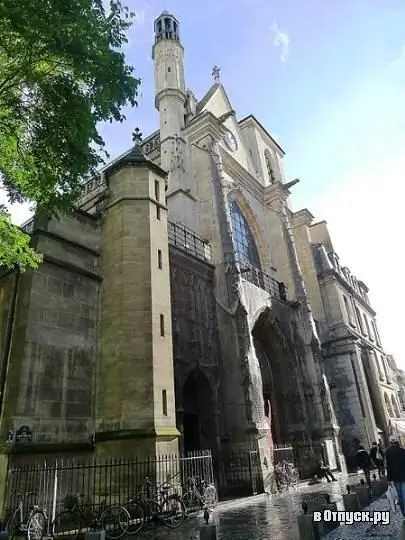
Description of the attraction
The Church of Saint-Merry is located on the right bank of the Seine, a hundred meters south of the Center Pompidou, right next to the Stravinsky fountain. Sometimes it is called "Little Notre Dame" - it is very similar to the main temple of Paris, and seven canons of the cathedral chapter served here.
The church was built from 1520 to 1612 on the site of the chapel in which the hermit monk Saint Mederic, who is considered the heavenly patron of the right bank of the Seine, was buried. His remains are still in the local crypt. From the chapel-predecessor in the church, only one window has survived, overlooking the rue Saint-Martin.
The building was built in a typical French flaming Gothic style. However, the lines of the interior are restrained and architecturally holistic. The church was reconstructed several times, in the 18th century Gothic elements were replaced by Baroque ones. For example, the choir was decorated with marble, as it happened a few years earlier in Notre Dame de Paris. In 1703-1706, Bartolomeo Rastrelli created here a tombstone of the Marquis de Pomponne sculpted from marble, but it was completely destroyed during the French Revolution. At that time, a saltpeter factory was located here. However, the oldest Parisian bell on the bell tower (cast in 1331) managed to survive not only the revolution, but also the fierce battles during the uprising against the July monarchy in 1832 - barricades were erected near the temple at that time.
Paintings by French masters, classical and modern sculpture are widely used in the interior of the church. Above the altar of the left transept is the painting of the now almost forgotten Simon Vouet "Saint Mederic Liberating the Prisoners". Nearby is a painting by Guillaume-Francois Colson, painted a century and a half later, "Saint Charles Borromee giving communion to a plague patient" (1819). In Saint-Merry there is a magnificent Pieta, a scene of the mourning of Christ by the Virgin Mary - the authorship of the sculpture is attributed to Nicolas Legendre. At the same time, you can see here a very modern bronze "Christ the Insulted" by Pierre de Gros.
Saint-Merry is a working church that plays the role of a pastoral center for the Beaubourg region. Concerts of sacred music every Saturday are given here by the Vocal Academy of Paris.






